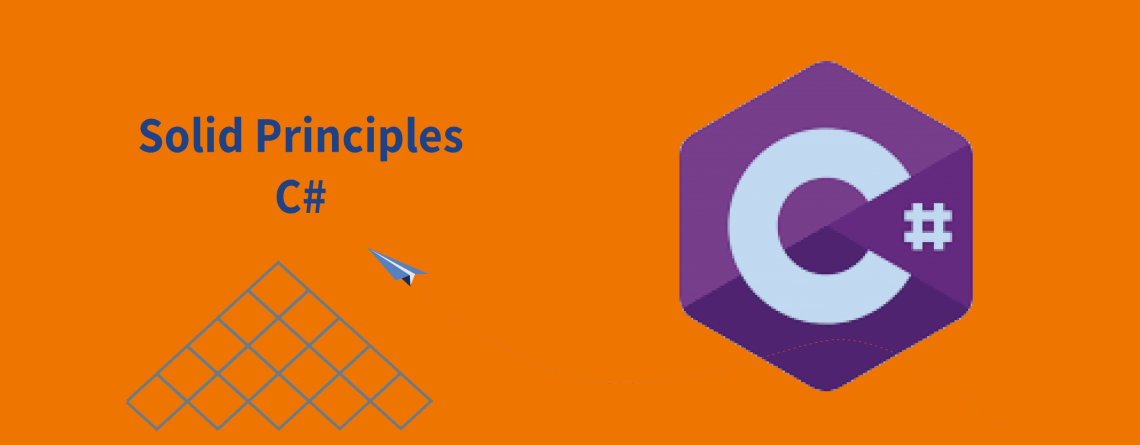SOLID Principles in Action: Designing Agile and Scalable Applications
In the fast-paced world of software development, designing applications that are both agile and scalable is essential for success. The ability to quickly adapt to changing requirements and handle increased workloads is crucial for delivering software solutions that meet the demands of today’s dynamic business environments. One approach that can greatly aid in achieving this goal is the application of SOLID principles.
SOLID is an acronym for five fundamental principles: Single Responsibility Principle (SRP), Open/Closed Principle (OCP), Liskov Substitution Principle (LSP), Interface Segregation Principle (ISP), and Dependency Inversion Principle (DIP). These principles serve as guidelines for writing clean, maintainable, and robust code that can easily evolve and scale as the application grows.
By understanding and applying the SOLID principles, software developers can create flexible, modular, and loosely coupled architectures that are not only easier to understand and maintain but also capable of accommodating new features and functionalities without introducing extensive modifications or risking unintended side effects.
This blog post will delve into the practical implementation of SOLID principles in action, specifically focusing on their impact on designing agile and scalable applications. We will explore how each principle contributes to the overall architecture and discuss real-world examples using the C# programming language to illustrate their practical applications.
By the end of this blog post, you will have a clear understanding of how SOLID principles can be effectively utilized to create software systems that exhibit the characteristics of agility, scalability, maintainability, and extensibility. So, let’s dive into the world of SOLID principles and discover how they can revolutionize the way we design software for agile and scalable applications.
Single Responsibility Principle (SRP)
The SRP states that a class should have only one reason to change, encapsulating a single responsibility. By adhering to this principle, we ensure that our classes are focused, cohesive, and easy to maintain. Let’s consider an example where we have a UserManager class responsible for managing user-related operations:
public class UserManager
{
private UserRepository userRepository;
public UserManager(UserRepository userRepository)
{
this.userRepository = userRepository;
}
public void RegisterUser(User user)
{
// Validation and registration logic
userRepository.Add(user);
}
public void DeleteUser(User user)
{
// Deletion logic
userRepository.Delete(user);
}
// Other user-related operations
}The UserManager class in this example is solely responsible for managing user actions such as registration and deletion. We may make changes to user-related logic without impacting other areas of the system because of this separation.
Open/Closed Principle (OCP)
The OCP emphasizes that software entities should be open for extension but closed for modification. In other words, we should design our code in a way that allows us to add new functionality without modifying existing code. Let’s consider an example where we have a ReportGenerator class responsible for generating different types of reports:
public interface IReportGenerator
{
void GenerateReport();
}
public class PdfReportGenerator : IReportGenerator
{
public void GenerateReport()
{
// PDF report generation logic
}
}
public class ExcelReportGenerator : IReportGenerator
{
public void GenerateReport()
{
// Excel report generation logic
}
}
public class ReportProcessor
{
private IReportGenerator reportGenerator;
public ReportProcessor(IReportGenerator reportGenerator)
{
this.reportGenerator = reportGenerator;
}
public void ProcessReport()
{
// Report processing logic
reportGenerator.GenerateReport();
}
}In this example, we’ve used the IReportGenerator interface to construct additional report generators without changing the ReportProcessor class. This architecture allows us to add additional report formats in the future without having to change the present software.
Liskov Substitution Principle (LSP)
The LSP states that objects of a superclass should be replaceable with objects of its subclasses without affecting the correctness of the program. In simpler terms, it highlights the importance of designing class hierarchies that follow an “is-a” relationship. Let’s consider an example where we have a Shape class hierarchy:
public abstract class Shape
{
public abstract double CalculateArea();
}
public class Rectangle : Shape
{
public double Width { get; set; }
public double Height { get; set; }
public override double CalculateArea()
{
return Width * Height;
}
}
public class Circle : Shape
{
public double Radius { get; set; }
public override double CalculateArea()
{
return Math.PI * Radius * Radius;
}
}
public class AreaCalculator
{
public double CalculateTotalArea(IEnumerable<Shape> shapes)
{
double totalArea = 0;
foreach (var shape in shapes)
{
totalArea += shape.CalculateArea();
}
return totalArea;
}
}In this example, both Rectangle and Circle classes inherit from the Shape class, allowing them to be used interchangeably in the CalculateTotalArea method of the AreaCalculator class. This adherence to the LSP enables us to write generic code that operates on shapes without having to worry about specific implementations.
Interface Segregation Principle (ISP)
The ISP states that clients should not be forced to depend on interfaces they do not use. It encourages us to create fine-grained interfaces instead of large, monolithic ones. Let’s consider an example where we have an ILogger interface:
public interface ILogger
{
void LogInfo(string message);
void LogError(string message);
void LogWarning(string message);
}
public class FileLogger : ILogger
{
public void LogInfo(string message)
{
// File logging logic for info messages
}
public void LogError(string message)
{
// File logging logic for error messages
}
public void LogWarning(string message)
{
// File logging logic for warning messages
}
}
public class DatabaseLogger : ILogger
{
public void LogInfo(string message)
{
// Database logging logic for info messages
}
public void LogError(string message)
{
// Database logging logic for error messages
}
public void LogWarning(string message)
{
// Database logging logic for warning messages
}
}
public class LogManager
{
private ILogger logger;
public LogManager(ILogger logger)
{
this.logger = logger;
}
public void Log(string message)
{
logger.LogInfo(message);
}
}In this example, the ILogger interface is segregated into separate methods for logging info, error, and warning messages. This allows us to implement only the required logging methods in concrete logger classes. The LogManager class depends only on the necessary logging functionality, promoting code clarity and avoiding unnecessary dependencies.
Dependency Inversion Principle (DIP)
The DIP states that high-level modules should not depend on low-level modules; both should depend on abstractions. It encourages us to depend on abstractions rather than concrete implementations. Let’s consider an example where we have a ProductService class depending on an IProductRepository interface:
public interface IProductRepository
{
void AddProduct(Product product);
}
public class ProductRepository : IProductRepository
{
public void AddProduct(Product product)
{
// Database persistence logic
}
}
public class ProductService
{
private IProductRepository productRepository;
public ProductService(IProductRepository productRepository)
{
this.productRepository = productRepository;
}
public void AddNewProduct(Product product)
{
// Business logic
productRepository.AddProduct(product);
}
}In this example, the ProductService class depends on the abstraction provided by the IProductRepository interface instead of the concrete implementation of the ProductRepository class. This design allows us to easily swap out the implementation if needed, without impacting the ProductService class.
Conclusion
By applying the SOLID principles in our C# code, we can design agile and scalable applications that are easier to understand, maintain, and extend. The Single Responsibility Principle keeps our classes focused, while the Open/Closed Principle enables us to add new functionality without modifying existing code. The Liskov Substitution Principle ensures our class hierarchies follow “is-a” relationships, and the Interface Segregation Principle helps us create fine-grained interfaces. Finally, the Dependency Inversion Principle allows us to depend on abstractions rather than concrete implementations.
By embracing these SOLID principles, we empower ourselves to build software systems that are not only agile and scalable but also resilient and adaptable to changing business needs. So, let’s embrace SOLID principles in our code and create software that stands the test of time. Happy coding!











Comment (1)
Great article! I really enjoyed reading about how the SOLID principles can be applied in designing agile and scalable applications. It’s fascinating to see how these principles promote modular and maintainable code, making it easier to adapt and scale applications as needed. The examples provided were clear and helped illustrate the concepts effectively. Looking forward to implementing SOLID principles in my own projects!